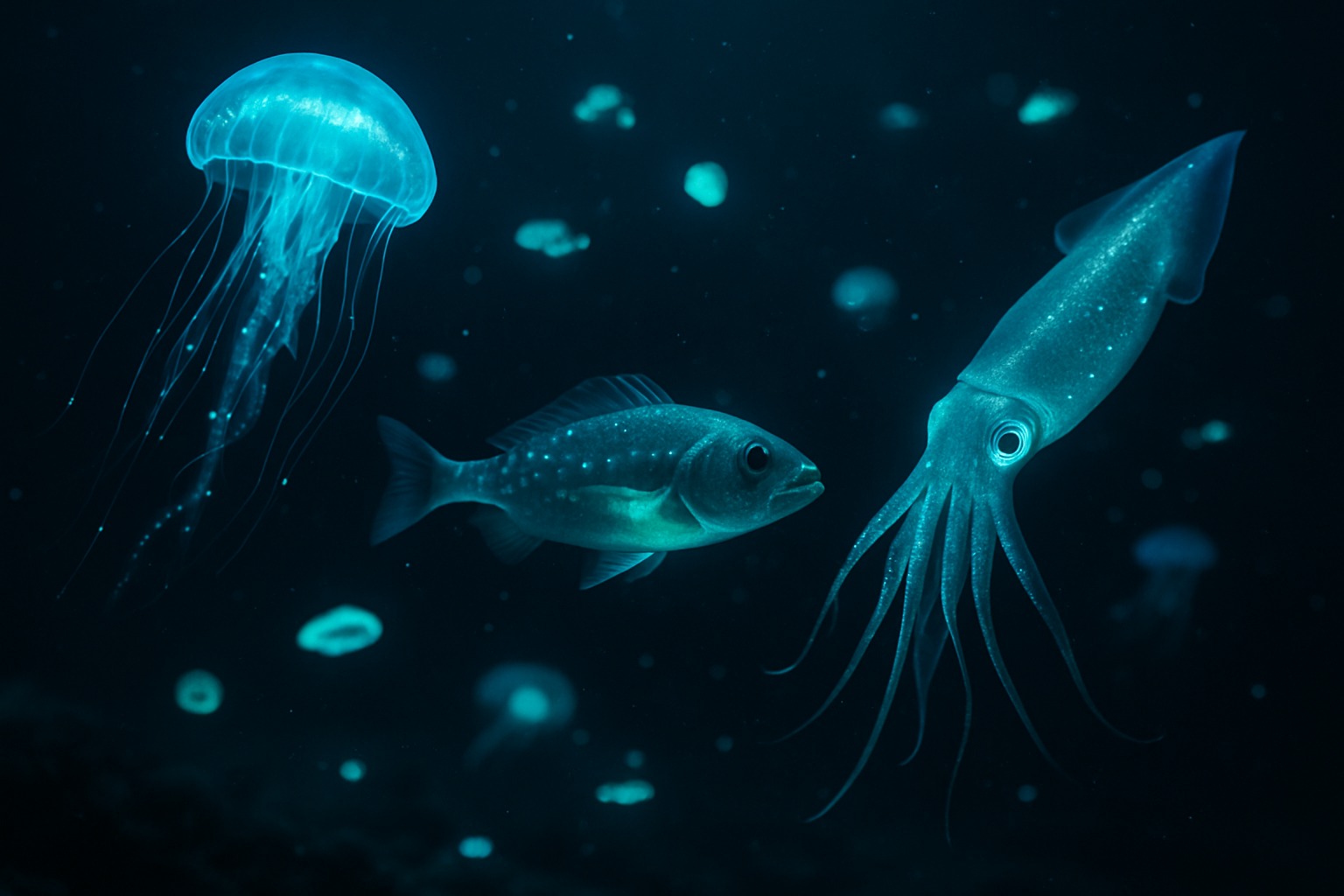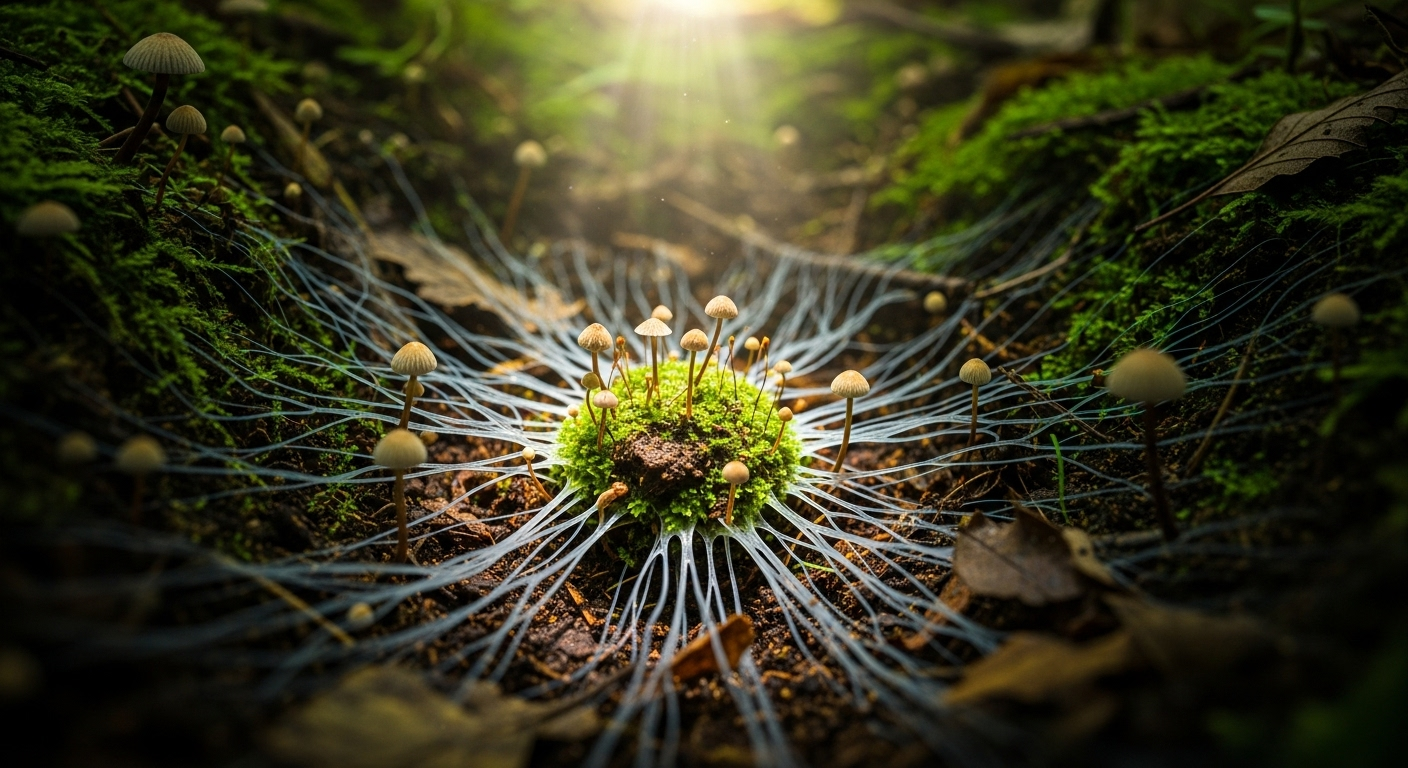The Secret World of Bioluminescent Marine Life
Dive into the mesmerizing depths of the ocean, where creatures emit their own light in a dazzling display of nature's ingenuity. Bioluminescent marine life has captivated scientists and nature enthusiasts for centuries, offering a glimpse into an alien world right here on Earth. This article explores the fascinating phenomenon of bioluminescence, its evolutionary significance, and the impact of these glowing organisms on marine ecosystems and human innovation.

The Science Behind the Glow
Bioluminescence is a chemical reaction that occurs within an organism’s body, resulting in the emission of light. This process involves a light-emitting molecule called luciferin and an enzyme called luciferase. When these compounds interact with oxygen, they produce a cold light that can range from blue to green, and occasionally red or violet. The efficiency of this light production is remarkable, with nearly 100% of the energy converted to light, making it one of the most efficient light sources known to science.
Evolution of Light in the Deep
The ability to produce light has evolved independently in numerous marine species over millions of years. In the perpetual darkness of the deep sea, bioluminescence serves multiple purposes. For some creatures, it’s a means of communication, allowing them to attract mates or warn off predators. Others use it as camouflage, matching the faint light from above to blend in with their surroundings. Predators like the anglerfish use bioluminescent lures to attract prey, while some species employ light as a defensive mechanism, expelling glowing clouds to confuse attackers.
Biodiversity of Bioluminescent Species
The ocean is home to an astonishing variety of bioluminescent organisms. From microscopic dinoflagellates that create sparkling waves to the eerie glow of deep-sea fish, the diversity is staggering. Notable examples include the firefly squid, which performs synchronized light shows during mating season, and the crystal jellyfish, whose green fluorescent protein (GFP) has revolutionized biomedical research. The vampire squid, despite its name, uses bioluminescence not to hunt but to confuse predators with a dazzling light display.
Ecological Importance and Environmental Indicators
Bioluminescent organisms play crucial roles in marine ecosystems. They form an essential part of the food web, with many species relying on them for sustenance. Additionally, these glowing creatures serve as indicators of ocean health. Changes in their populations or behavior can signal shifts in environmental conditions, making them valuable tools for monitoring marine ecosystems. Scientists are increasingly using bioluminescent organisms to study pollution levels and climate change impacts on ocean environments.
Applications in Science and Technology
The study of bioluminescence has led to groundbreaking applications across various fields. In medicine, bioluminescent proteins are used as markers to track cellular processes and disease progression. The discovery of GFP from jellyfish earned researchers the Nobel Prize in Chemistry in 2008, highlighting its significance in scientific research. Biotechnology companies are exploring ways to use bioluminescent organisms in creating sustainable light sources, potentially revolutionizing how we illuminate our world.
Challenges and Conservation Efforts
Despite their importance, bioluminescent marine species face numerous threats. Ocean pollution, climate change, and overfishing are impacting their habitats and populations. Conservation efforts are underway to protect these unique creatures and their environments. Research initiatives aim to better understand bioluminescent ecosystems and develop strategies for their preservation. Public awareness campaigns highlight the beauty and significance of these glowing organisms, fostering support for marine conservation efforts.
Future Prospects and Ongoing Research
The field of bioluminescence research is rapidly evolving, with new discoveries continually emerging. Scientists are exploring the potential of bioluminescent organisms in developing new medical treatments, creating bio-inspired technologies, and enhancing our understanding of marine ecosystems. Ongoing studies focus on mapping bioluminescent hotspots in the ocean, unraveling the genetic basis of light production, and investigating the potential applications of bioluminescence in environmental monitoring and sustainable technology.
In conclusion, the secret world of bioluminescent marine life offers a window into the wonders of nature and the potential for groundbreaking scientific advancements. As we continue to explore the depths of our oceans, these glowing creatures remind us of the vast mysteries that still exist in our world and the importance of preserving these unique ecosystems for future generations. The study of bioluminescence not only enriches our understanding of marine biology but also holds promise for innovative solutions to some of our most pressing technological and environmental challenges.





